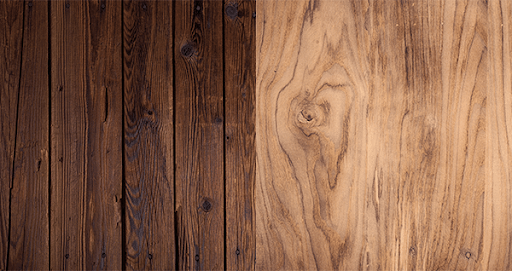How To Get Paint Of Wood: The Ultimate Step-by-Step Guide
Looking for the best method on how to get paint of wood? Whether you’re restoring an old piece of furniture, revamping baseboards, or prepping hardwood for a fresh finish, removing paint from wood can be straightforward if you use the right tools and techniques. In this detailed guide, we’ll walk you through several effective ways to remove paint from wood while preserving its natural beauty.
Why Proper Paint Removal Matters
Removing paint from wood isn’t just about appearances—it’s essential for achieving a smooth surface for refinishing. Layers of old paint can hide cracks, dents, and imperfections. Incomplete removal can also prevent new paint or stain from properly adhering. That’s why understanding how to get paint of wood the right way is crucial for long-term results.
1. Gather Your Paint Removal Tools and Supplies
Before you start, gather the following tools and materials:
- Paint stripper (chemical or natural)
- Paint scraper or putty knife
- Wire brush
- Sandpaper (medium to fine grit)
- Drop cloths or plastic sheeting
- Protective gear (gloves, goggles, mask)
- Heat gun (optional)
Always work in a well-ventilated area, and protect surrounding surfaces with drop cloths.
2. Start with a Paint Stripper for Effective Results
A paint stripper is often the fastest and most efficient way to remove multiple layers of paint from wood.
Chemical Paint Strippers
- These work by softening the paint, making it easy to scrape off.
- Apply with a brush, wait 15–30 minutes as directed, and then use a paint scraper to lift the softened paint.
- Choose low-VOC or biodegradable strippers if you’re working indoors or on antique wood.
Citrus-Based Paint Removers
- Non-toxic and eco-friendly.
- Ideal for smaller jobs or indoor use.
- May require more time and multiple applications for thick or stubborn paint.
Tip: Always test a small inconspicuous area before full application to ensure the stripper won’t damage the wood.
3. Use a Paint Scraper to Remove Loose Layers
Once the paint stripper has done its job, use a paint scraper or putty knife to remove the loosened paint. Be careful not to gouge or scratch the wood. Hold the tool at a 30 to 45-degree angle and work slowly in the direction of the wood grain.
For intricate moldings or carved wood surfaces, consider using a plastic scraper or a detail scraper to get into tight corners.
4. Try a Heat Gun for Stubborn Paint
A heat gun is another effective tool for stripping paint, especially thick or old layers.
- Hold the heat gun 6–8 inches from the surface.
- Move it slowly to soften the paint.
- As it bubbles, use a scraper to peel it away.
- Avoid overheating the wood, which can scorch or damage it.
Heat guns work best on flat, open wood surfaces like tabletops or door panels.
5. Use a Wire Brush for Detailed Cleanup
After scraping, some paint residue may remain in grooves or grain lines. A wire brush is perfect for cleaning these areas without harming the wood underneath.
- Gently scrub in the direction of the grain.
- Use a light hand to avoid leaving marks or gouges.
Wire brushes are especially helpful when restoring ornate furniture or old architectural trims.
6. Sand the Surface for a Smooth Finish
Once most of the paint is gone, sanding helps smooth the surface and remove any leftover bits.
- Start with medium-grit sandpaper (120 grit) to remove rough patches.
- Finish with fine-grit (220 grit) to prepare for repainting or staining.
You can sand by hand or use an electric sander for larger areas. Always sand in the direction of the wood grain to avoid scratches.
Pro Tip: Use a tack cloth after sanding to remove all dust before applying a new finish.
7. Natural DIY Alternatives to Chemical Strippers
If you prefer a more natural approach, there are DIY options you can try:
Vinegar
- Heat white vinegar and apply it to the painted wood.
- Let it sit for 10–15 minutes.
- Scrape with a putty knife.
Baking Soda and Water
- Combine baking soda with hot water to create a paste.
- Apply to painted wood, wait 15–20 minutes.
- Scrape and scrub gently.
While these methods are not as powerful as commercial strippers, they’re great for small projects or sensitive wood.
8. Finishing Up: Clean and Restore the Wood
After removing the paint and sanding the wood smooth:
- Wipe down with mineral spirits or denatured alcohol to remove any residue.
- Allow the wood to dry completely.
- Now your surface is ready for a new coat of paint, wood stain, or protective sealant.
Removing paint from wood takes patience and the right method—but the results are worth it.
9. Bonus Tips for Easier Paint Removal
- Work in sections: Don’t try to strip large areas all at once.
- Protect hardware: Remove handles, knobs, or hinges before starting.
- Safety first: Always wear gloves and eye protection, especially when using chemicals or heat.
- Know your wood type: Softer woods like pine may be more prone to damage, so adjust your pressure accordingly.
10. How to Get Paint Of Wood Without Damaging the Surface
A major concern during paint removal is avoiding damage to the wood underneath. Here are strategies to strip paint while preserving the integrity of the surface:
Avoid Harsh Scraping
- Use flexible plastic scrapers rather than metal tools when working on delicate wood.
- Apply gentle pressure and scrape at a shallow angle to avoid gouging the grain.
Monitor Heat Gun Usage
- Don’t leave the heat gun on one spot too long; constantly move it in small circles.
- Avoid high heat settings for softwoods like pine or cedar.
Test Before You Go All In
- Always test any method—chemical, heat, or natural—on a hidden section of the wood.
- This ensures compatibility and prevents surprises like discoloration or etching.
11. Dealing with Lead Paint on Wood
If you’re working on wood surfaces in a house built before 1978, there’s a possibility the paint contains lead, which is toxic.
Safety First
- Do not sand or heat lead-based paint—it releases dangerous dust or fumes.
- Hire a certified professional to test for and remove lead paint safely.
Signs of Lead Paint
- Thick, multiple layers of paint with a chalky or cracked finish.
- Peeling that reveals sweet-smelling dust or flakes.
If in doubt, always opt for safety and bring in experts who specialize in lead paint removal.
12. Removing Paint from Wood Furniture
Restoring wooden furniture often requires delicate techniques:
For Flat Surfaces:
- Use a chemical stripper or sanding block.
- Finish with hand sanding for smoothness.
For Carvings or Legs:
- Apply stripper with a small brush.
- Use steel wool, toothbrushes, or cotton swabs to remove paint from crevices.
Reconditioning furniture with care not only removes old paint but also preserves the craftsmanship and grain.
13. Stripping Paint from Outdoor Wooden Surfaces
Decks, fences, and exterior trim face harsh elements, so removing paint from them takes a bit more effort:
- Use paint strippers labeled for outdoor use—they’re more robust and resistant to weathering.
- Consider pressure washing after stripping (at a low PSI to avoid damaging the wood).
- Sand down any rough patches and seal with a weather-resistant stain or paint afterward.
Outdoor projects benefit greatly from a moisture-resistant finish after paint removal, especially in climates with high humidity or rainfall.
14. Preventing Paint Adhesion Issues in the Future
Once you’ve stripped the wood clean, make sure it’s properly prepped before adding new finishes:
- Clean thoroughly: Remove all dust, residue, and stripper chemicals.
- Dry completely: Moisture in the wood can cause bubbling or peeling in the new paint.
- Prime first: Especially when painting raw wood, a primer ensures proper adhesion.
FAQs on How to Get Paint Of Wood
Q: Can I use a pressure washer to remove paint from wood?
A: Yes, but only on outdoor surfaces and with caution. Use a pressure washer on the lowest setting, and never on antique or softwood pieces.
Q: What’s the easiest way to remove paint from wood trim?
A: Use a gel-based stripper for vertical surfaces, as it clings better and reduces dripping. Follow up with a scraper and light sanding.
Q: Is sanding enough to remove paint from wood?
A: Sanding alone can work for thin paint layers but is best used as a finishing method after a stripper or heat gun.
Q: Can vinegar remove paint from wood?
A: Vinegar softens some types of paint, making it easier to scrape off. It’s a good natural method for small or lightly painted areas.
Conclusion: Best Way to Get Paint Off Wood
When it comes to how to get paint of wood, there’s no one-size-fits-all method. Whether you opt for a chemical stripper, heat gun, or a DIY solution, the key is using the right combination of tools and techniques for your specific project. Taking your time and treating the wood gently ensures the best results—whether you’re preparing it for repainting or restoring its natural finish.
Stay in touch to get more news & updates on Hamrosolarllc!






